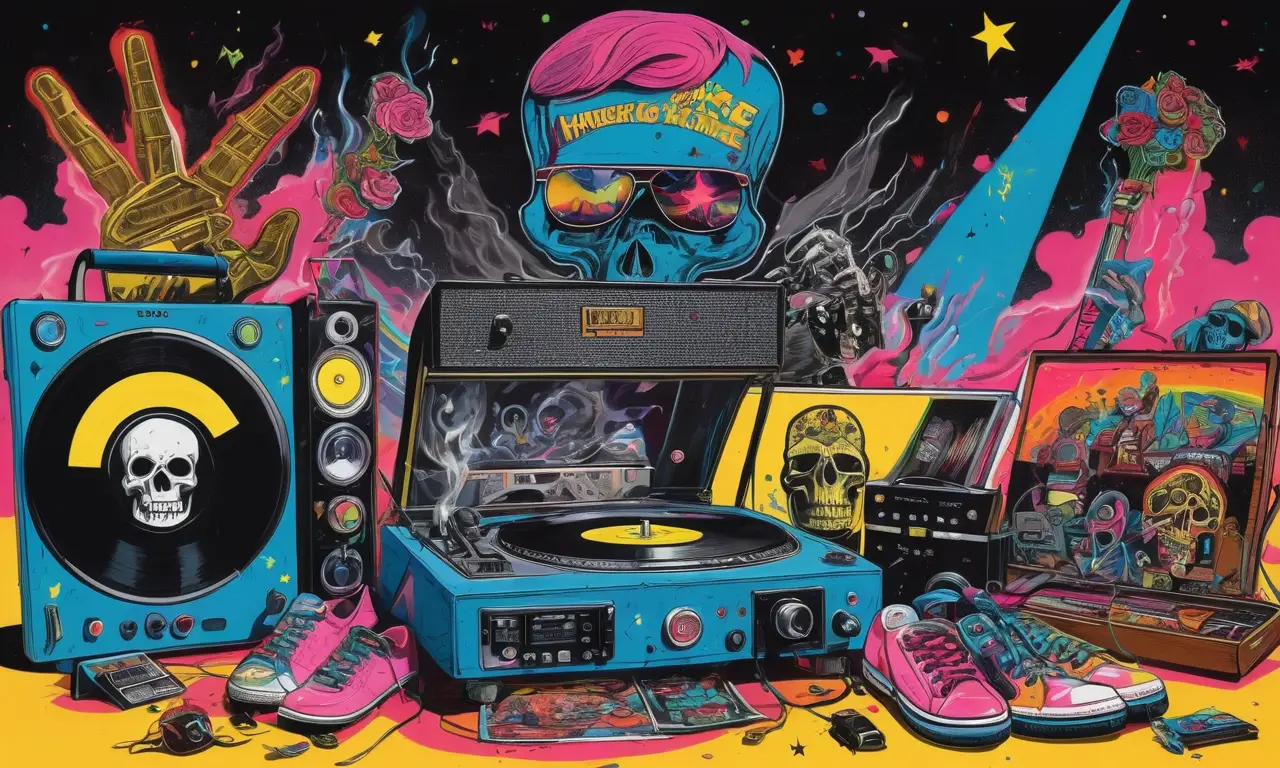The 1970s and 1980s were pivotal decades for rock music, each forging its own unique path and leaving an indelible mark on the genre’s evolution. While the 70s saw the rise of progressive rock, hard rock, and glam rock, the 80s ushered in new wave, hair metal, and alternative rock, reflecting the changing cultural landscape and musical innovations of each era. This article delves into the defining characteristics of 70s vs 80s rock, exploring iconic bands and trends that shaped these unforgettable decades.
This exploration will begin by examining the hallmarks of 1970s rock music, focusing on the subgenres that dominated the scene. We’ll then delve into the specific legacies of legendary bands like Led Zeppelin, Pink Floyd, and David Bowie. Subsequently, we’ll shift our focus to the 1980s, analyzing the emergence of new wave, hair metal, and alternative rock, highlighting influential artists such as The Cure, Bon Jovi, and Nirvana. Finally, we’ll conclude by reflecting on the lasting impact of these distinct eras on the trajectory of rock music.
1970s Rock Music Icons
The 1970s witnessed a flourishing of diverse rock subgenres, each with its own distinctive sound and aesthetic. From the experimental soundscapes of progressive rock to the raw energy of hard rock and the flamboyant theatricality of glam rock, the 70s offered a rich tapestry of musical experiences.
This decade saw the rise of iconic bands that pushed creative boundaries and redefined the possibilities of rock music. The influence of these artists continues to resonate today, inspiring generations of musicians and shaping the sound of modern rock. The 70s were a time of experimentation and innovation, where rock music truly came into its own as a powerful force in popular culture.
Progressive Rock, Hard Rock, and Glam Rock
Progressive rock emerged in the early 70s, characterized by complex compositions, extended instrumental sections, and conceptual lyrics. Bands like Pink Floyd and Genesis pushed the boundaries of musical experimentation, incorporating elements of classical music, jazz, and electronic sounds. Hard rock, on the other hand, emphasized a heavier sound with distorted guitars, powerful vocals, and driving rhythms. Led Zeppelin and Black Sabbath became synonymous with this genre, captivating audiences with their raw energy and blues-influenced riffs. Glam rock, with its flamboyant costumes, theatrical performances, and catchy melodies, captured the spirit of the 70s counterculture. David Bowie and T. Rex epitomized this subgenre, blurring the lines between music and performance art.
The Impact of Subgenres
These distinct subgenres not only defined the musical landscape of the 70s but also influenced subsequent generations of musicians. Progressive rock’s experimental approach paved the way for alternative rock in the 80s and beyond. Hard rock’s raw energy laid the foundation for heavy metal, while glam rock’s theatricality continues to inspire contemporary artists who embrace visual spectacle alongside their music.
Led Zeppelin, Pink Floyd, and David Bowie

Led Zeppelin, with their blues-infused hard rock anthems and mystical lyrics, became one of the most influential bands of all time. Their iconic albums like “Led Zeppelin IV” and “Physical Graffiti” continue to be celebrated for their musical virtuosity and enduring power.
Pink Floyd, known for their psychedelic soundscapes and conceptual albums, pushed the boundaries of progressive rock. Albums like “The Dark Side of the Moon” and “Wish You Were Here” explored themes of alienation, madness, and societal pressures, resonating with audiences on a deeply emotional level. David Bowie’s chameleon-like persona and genre-bending music made him a true icon of the 70s. From his glam rock beginnings to his experimental art-rock phase, Bowie constantly reinvented himself, challenging conventions and inspiring generations of artists.
1980s Rock Music Trends
The 1980s witnessed a seismic shift in the rock music landscape, with new subgenres emerging and established bands evolving their sound. The decade saw the rise of new wave, hair metal, and alternative rock, each reflecting the changing cultural trends and technological advancements of the time.
New wave embraced synthesizers, electronic drums, and catchy melodies, often incorporating elements of punk and post-punk. Bands like The Cure and Depeche Mode created atmospheric soundscapes that explored themes of alienation, introspection, and romanticism. Hair metal, with its emphasis on big hair, power ballads, and guitar solos, dominated the mainstream charts. Bon Jovi, Mötley Crüe, and Def Leppard became synonymous with this genre, captivating audiences with their energetic performances and anthemic songs.
New Wave, Hair Metal, and Alternative Rock

Alternative rock emerged as a counter-cultural force in the late 80s, rejecting the commercialism of hair metal and embracing a more raw and introspective sound. Bands like Nirvana, R.E.M., and Sonic Youth challenged musical norms with their experimental approach to songwriting and production.
The Diversification of Rock
The 80s saw a diversification of rock music, catering to a wider range of tastes and preferences. From the synth-driven soundscapes of new wave to the stadium-filling anthems of hair metal and the introspective lyrics of alternative rock, there was something for everyone. This diversity reflected the changing social landscape of the decade, with younger generations seeking out music that resonated with their experiences and anxieties.
The Cure, Bon Jovi, and Nirvana
The Cure, with their melancholic melodies and gothic imagery, became one of the most influential new wave bands of the 80s. Their albums like “Disintegration” explored themes of love, loss, and existential angst, resonating with a generation grappling with complex emotions.
Bon Jovi, with their arena-filling anthems and catchy hooks, epitomized the hair metal sound of the 80s. Their album “Slippery When Wet” became one of the best-selling albums of all time, solidifying their status as rock superstars. Nirvana, emerging from the underground alternative scene in the late 80s, revolutionized rock music with their raw energy and angst-ridden lyrics. Their album “Nevermind” became a cultural phenomenon, ushering in the grunge era and influencing countless bands that followed.
Conclusion
The 1970s and 1980s were pivotal decades for 70s vs 80s rock, each shaping the genre’s evolution in distinct ways. The 70s saw the rise of progressive rock, hard rock, and glam rock, with iconic bands like Led Zeppelin, Pink Floyd, and David Bowie pushing creative boundaries and defining the sound of a generation. The 80s witnessed the emergence of new wave, hair metal, and alternative rock, reflecting the changing cultural landscape and technological advancements of the time. Bands like The Cure, Bon Jovi, and Nirvana left an indelible mark on music history, influencing countless artists and shaping the trajectory of rock music for decades to come. The legacy of these iconic bands and subgenres continues to resonate today, reminding us of the enduring power and influence of 70s vs 80s rock.
